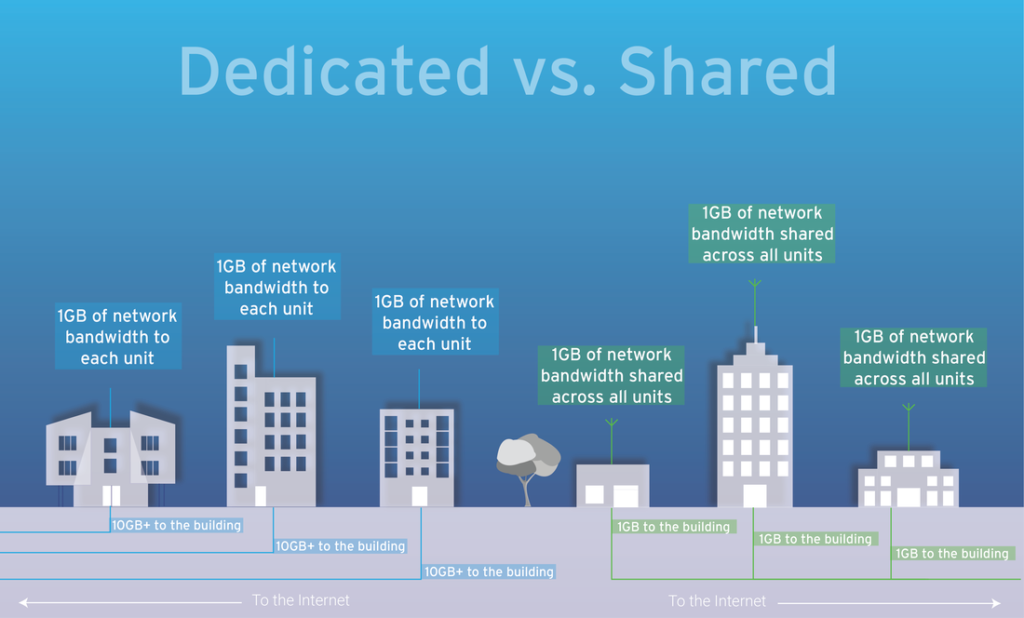- Jul 25, 2019
- Paxio

When it comes to fiber optic internet, there are three distinct types of fiber delivery. There are also two distinct ways that Internet Service Providers (ISPs) connect your home to the network. You can be connected with shared fiber, or connected with dedicated fiber.
We are here to shed some light on the pros and cons of each connection type, so you can make a more informed decision when it comes to fiber internet for your home.
What is Shared Fiber?
Shared fiber simply means more than one residential unit is using the same fiber connection. Essentially, the single fiber connection from the data node is split when it comes into the building. Shared fiber typically uses the existing building infrastructure which is copper based (ethernet, coaxial cable, etc.). Sometimes, shared fiber bandwidth is spread across other buildings many miles away using point-to-point radio shot.
Before we look at the pros and cons of shared fiber, let’s first look at dedicated fiber.
What is Dedicated Fiber?
Dedicated fiber is true to its name. Each individual resident connection has its own fiber connection out to the data node. It connects from the property all the way out to the data hub where it then connects to the fiber backbone. Each dedicated customer has their own connection and bandwidth that isn’t shared with any other customer.
Pros and Cons
Shared Fiber
Dedicated Fiber
Still confused or need more information on what internet solution is right for you? We get it. PAXIO is here to help you understand what your needs and demands require – making sure you find the best fit for your home and you get what you pay for. For more information, please contact PAXIO.